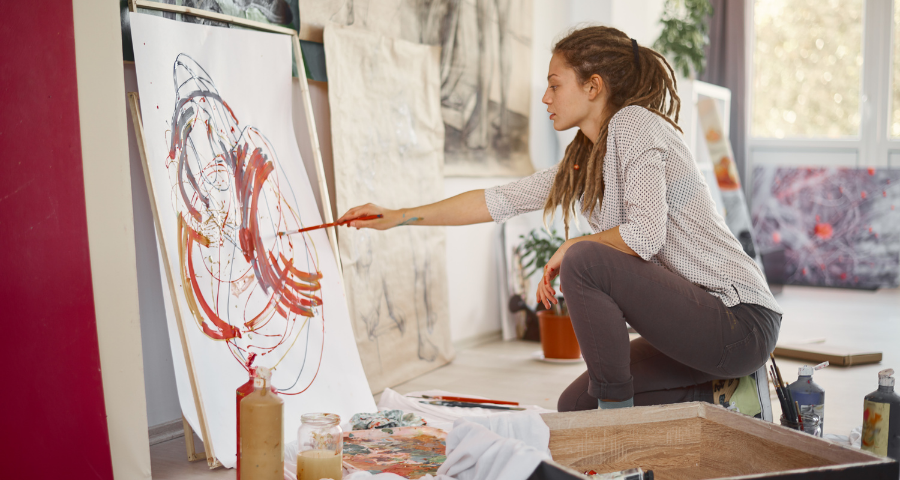Artists value their equipment as it is what allows them to paint with such freedom. The easel is somewhere they can keep their painting while it is a work in progress and somewhere to position their canvas while painting so that it is always at the same height. An artist’s brushes can be matched to the size of the stroke that needs to be made. The finest blade of grass, for instance, will require the finest of brushes. Also, an artist’s mixing tray will need to have enough sections in it to mix the different shades of the day. Once a shade has been mixed it may not be easy to replicate it again, so it can be kept in that section until the artist is happy that they have used it everywhere in the painting it needs to be. An artist also values space to work in and often invests in things like a backyard studio shed to create a dedicated work space where they can be alone and let their creativity run wild.
So, assuming that you are an artist reading this, let us explore the equipment that you might use and try and paint a picture in terms of its use.
Easels
As an artist, you will use an easel because it makes you work vertically and helps you to create a more accurate painting by allowing you to work in the same plane that the painting will be hung.
An A-frame is perfect if you are the kind of artist who works in limited spaces and works on small and medium-scale paintings. If you are an artist who works with bigger canvases, then you will want an H-Frame as this provides a more stable easel for you to work on. There are also giant easels that you can buy to work on larger-scale paintings within a dedicated studio space.
Brushes
Apart from different widths of brush, you will be aware that there are also different-shaped heads you can consider to help control the paint in the way you would want it to flow onto the canvas. It is a good idea to consider these when painting realistic scenes.
So, as an artist, or perhaps an artist to be, you will find yourself choosing between round with a pointed tip and closely arranged bristles for detail, flat brushes that will spread the paint more quickly over a surface, fan brushes for blending broad areas of paint, and filbert brushes that are flat and have a domed end. They are all useful to have among your brushes. So, it might be a good idea to go shopping for artist brushes if you don’t already have them. Quality paintbrushes are often quite expensive, which is why you may want to consider shopping at places like Home Depot and save a few bucks by using discount coupons that could be availed from sites like https://www.raise.com/coupons/home-depot.
You may have noted that brushes intended for art will generally be sized between 000 and 20. Their bristles will mostly be natural and either constructed from soft hair or hog (pig) hair. With the cheaper brushes, synthetic man-made materials may have been used. Wooden handles signal a more expensive brush than when the handles are manufactured from plastic.
A tip for keeping brushes moist when you are still working with them is to wrap a polythene bag around them. This will allow you time to have lunch, as you lie in the meadow admiring the landscape that you are in the process of painting. Alternatively, buy you time as you eat your sandwich while looking through your studio window and thinking what striking clothes some people wear in the daytime and how little some bother with at night.
If you work with oil paints, you will also be used to using a blunt knife to apply the paint thickly to create texture and build up an image. You must agree that it is fascinating to stand back from an oil painting and see how realistic it is when you consider it has been built up in layers and close-up shows every brushstroke.
Mixing Trays
A good mixing tray, or artist’s palette, should have plenty of sections so that in one session you can mix lots of different combinations, potentially with the help of a resource like a guide for mixing to gold, and experiment while having the possibility of returning to a previous shade. Also, it should be easy to clean. They are generally flat and have hollowed sections. The round sections are conducive to mixing the paint with a round stirring action.
You can achieve every shade using red, blue, and yellow pigments, and white or black to lighten or darken them. Black contains all the shades. Red is the most used by artists. This is likely to be because it comes in so many shades, including pink, which is needed for many portraits.
In summary, an easel positions and steadies the work for an artist as it would be displayed, brushes allow for different thicknesses of brushstrokes, and the artists’ palette will ensure that an artist can change their mind and revert to a previous shade.

